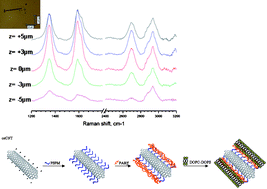Stepwise surface tailoring of carbon nanotubes with polyelectrolyte brushes and lipid layers to control their intracellular distribution and “in vitro” toxicity†
Abstract

* Corresponding authors
a
CICbiomagune, Pº Miramon 182 ed. Empresarial C, Donostia-San Sebastian, Spain
Fax: +34 943005301
Tel: +34-943005311
b Instittute of Biophysics and Medical Physics, Härtelstraße 16-18, Leipzig, Germany
c Servei de Microscòpia, Universitat Autònoma de Barcelona, Bellaterra, Spain

 Please wait while we load your content...
Something went wrong. Try again?
Please wait while we load your content...
Something went wrong. Try again?
G. Romero, I. Estrela-Lopis, P. Castro-Hartmann, E. Rojas, I. Llarena, D. Sanz, E. Donath and S. E. Moya, Soft Matter, 2011, 7, 6883 DOI: 10.1039/C0SM01511C
To request permission to reproduce material from this article, please go to the Copyright Clearance Center request page.
If you are an author contributing to an RSC publication, you do not need to request permission provided correct acknowledgement is given.
If you are the author of this article, you do not need to request permission to reproduce figures and diagrams provided correct acknowledgement is given. If you want to reproduce the whole article in a third-party publication (excluding your thesis/dissertation for which permission is not required) please go to the Copyright Clearance Center request page.
Read more about how to correctly acknowledge RSC content.
 Fetching data from CrossRef.
Fetching data from CrossRef.
This may take some time to load.
Loading related content
